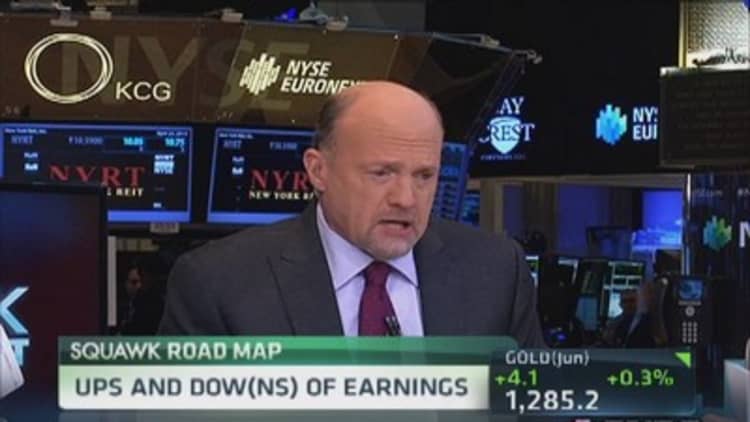Defense spending in the Middle East and North Africa is set to hit nearly $1 trillion over the next seven years as the regions' growth prospects brighten, according to a report by defense analysis firm IHS Jane's.
Between 2014 and 2020, the Middle East and North Africa will spend $920 billion on defense, according to IHS - an average of £131.4 billion each year. By contrast, these regions spent a combined $120.6 billion in 2013.
The Gulf economy in particular is set to benefit from this hike in spending, with some $27 billion expected to be injected into its economy via so-called "offset agreements." These are deals between defense companies and governments to help benefit a country's economy, such as agreeing to use local suppliers to build equipment.
Read MoreArms race on again as Middle East and Asia jostle
The forecasts come as a number of western European countries are working to reduce their defense budgets, as they grapple with austerity measures and the need to get national spending down.
But the Middle East economies are expected to post stronger growth than those in western Europe. Gross domestic product (GDP) growth in the Gulf Cooperation Council (GCC) nations is expected to peak at 4.6 percent in 2017, before falling to 4.1 percent in 2020, according to IHS.
"It is one of the greatest areas to spend in the world," Scott Key, CEO of IHS told CNBC in an interview.
"The defense spend increases are coming as, of course, the mature economies spend less on defense… So we are starting to see supply chains shift to those regions where the opportunity is and the growth is."

Middle East defense budgets grew by 12.1 percent in 2013, according to IHS Jane's Defence Budgets data, with four of the top five fastest-growing defense spend figures from countries in the region.
Read MoreThe Battle of 2014: A shrinking defense industry
Oman's defence budget increased by 35.7 percent in 2013 from the year before, while Iraq's spending increased 32.4 percent in the same period.
IHS' report also highlighted that, as the Middle East looks to develop its non-oil-sector economy to boost growth, defense spending is one way to promote the building of infrastructure and job creation.
"Economic diversification is seen as one avenue to achieve long-term economic goals, defense industrialization is viewed as a route to economic change and an opportunity to create jobs for nationals," IHS said in a press release.
Read MoreChart of the Day: US military dollars vs the world
A number of major defense and aerospace companies have been eyeing up the region recently, looking to strike deals. In February, Saudi Arabia agreed to buy 72 Eurofighter Typhoon jets from BAE Sytems for an undisclosed fee. The UAE is currently in talks over a $270-million weapons deal with Lockheed Martin.
Despite this vibrant activity in the Middle East's defense sector, however, not all experts are convinced by IHS' spending forecasts, given the economic and political uncertainty in the region.
"The amount they will spend will depend on economic performance, their internal stability and external relations. All three of those are currently very uncertain," Ron Smith, professor of applied economics at Birkbeck University, told CNBC in a phone interview.


